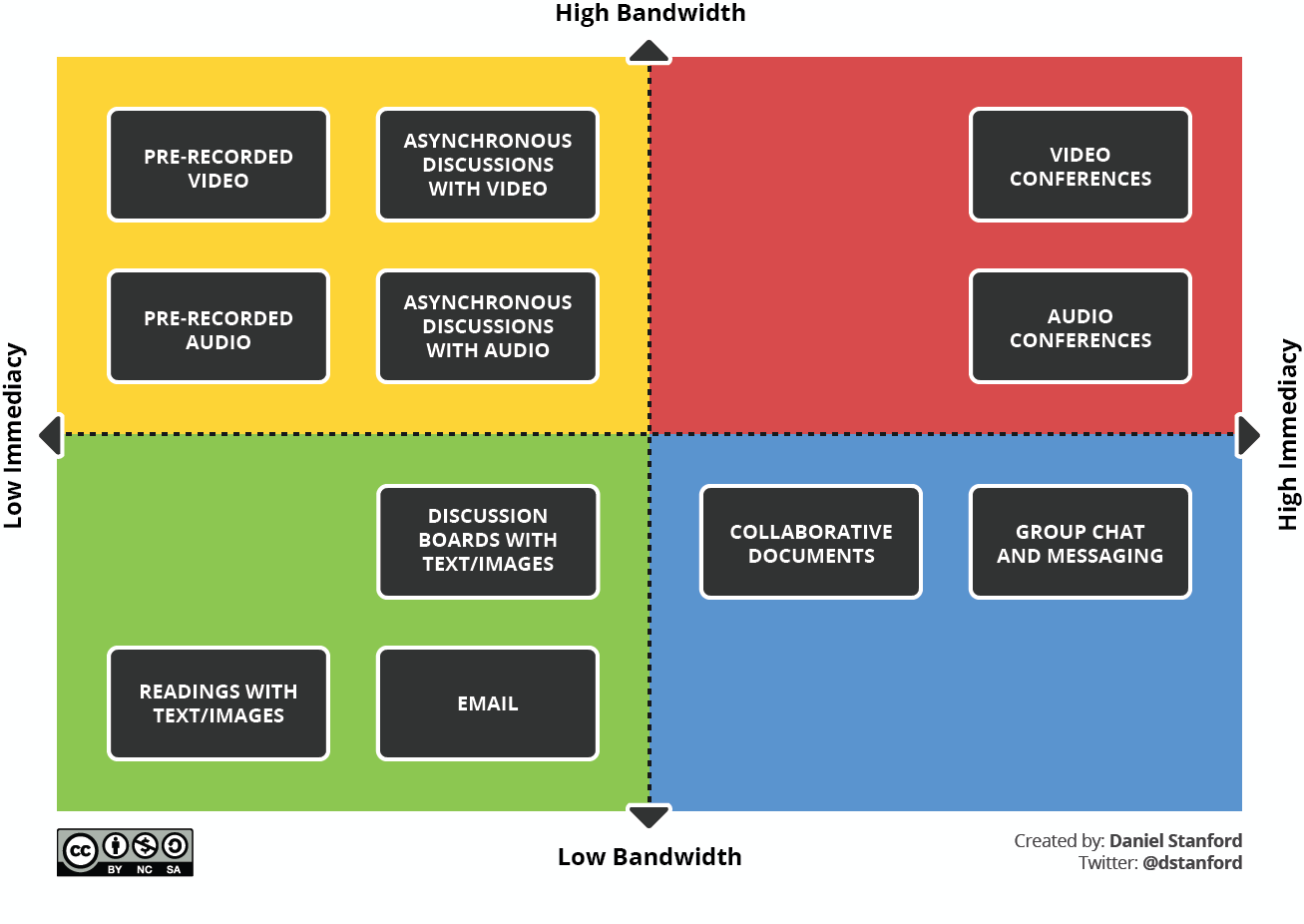
Students will want to know about the delivery method of the course you are teaching, and words like "multimodal," "hybrid," and "JayFlex" will not mean much to them. Explain up front how you will be teaching and where to find things so they know what will be happening.
As of 11 August 2020, general discussion and Q&A among faculty will take place on the Sakai site "Teaching Resources."
Recordings, etc. from the summer forums are available here.
Use Sakai as a common “gateway” for all class announcements (very important).
Develop a flexible attendance and accountability policy.
Design flexible assessment methods that can be managed online.
Distribute learning materials digitally.
Collect assessments and learning activities digitally.
Keep things simple and do not shun the low-tech option.
Videoconferencing Alternatives: How Low-Bandwidth Teaching Will Save Us All, by Daniel Stanford (IDDblog.org). Good overview of engaging activities that will not strain computer resources.

As many questions as you have had about how the fall semester will work, its safe to assume your students have also had many of the same questions. In order to take away some of the fear of the unknown, we are recommending that you reach out to your students sooner rather than later and talk to them about the logistics of your fall course. Even if you don't have it all figured out, communication from their faculty member will be reassuring.
Consider covering any of these topics with your students:
Express your excitement to see them again (online or in person) and plan to continue communicating expectations and changes with your students throughout the semester, perhaps even at the start of each week or unit.
Things will change, students may be ill, you may be ill, public health conditions might require additional adjustments to the way the college operates. Having clear and open communication established will help you through all of this.